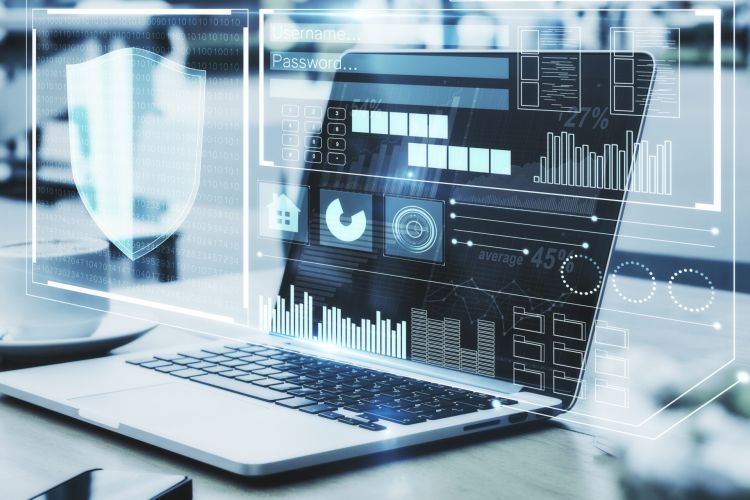
The Intersection of Data Analytics and Cybersecurity: A New Paradigm for Digital Defense
Data breaches, ransomware attacks, and cyber espionage dominate headlines, and organizations across industries are under relentless pressure to protect their digital assets. Yet, as cyber threats become more sophisticated and persistent, traditional cybersecurity methods — focused largely on static rules, firewalls, and signature-based detection — are struggling to keep up. Enter data analytics: a transformative force that is reshaping how organizations approach cybersecurity.
The convergence of data analytics and cybersecurity offers a proactive, intelligence-driven approach to defense. By leveraging data to detect anomalies, predict potential threats, automate responses, and manage vulnerabilities, companies can build smarter, more resilient cybersecurity strategies. This article explores how these two critical disciplines intersect, the opportunities and challenges they present, and how businesses can position themselves at the forefront of this rapidly evolving field.
Data Analytics and Cybersecurity: Defining the Relationship
Cybersecurity traditionally aims to protect networks, systems, and data from unauthorized access, exploitation, and attack. It involves securing everything from endpoints and applications to cloud infrastructure and IoT devices.
Data analytics, on the other hand, involves the systematic computational analysis of data to extract insights, patterns, and trends. When data analytics is applied to cybersecurity, it provides organizations with actionable intelligence to detect, understand, and mitigate cyber threats more effectively and efficiently.
Together, these disciplines create a feedback loop of continuous monitoring, learning, and adapting that can dramatically improve an organization’s security posture.
How Data Analytics Revolutionizes Cybersecurity
1. Advanced Threat Detection and Anomaly Identification
The most important application of data analytics in cybersecurity is in detecting threats that would otherwise go unnoticed. Traditional security systems depend heavily on known threat signatures and pre-configured rules, which can be blind to novel attacks and zero-day vulnerabilities. Data analytics offers a powerful alternative:
- Behavioral Analytics: By establishing baselines of normal behavior for users, applications, and devices, data analytics tools can quickly flag anomalies. Examples include an employee logging in from two countries simultaneously or a sudden spike in file downloads from a server.
- Predictive Threat Modeling: Leveraging machine learning algorithms, organizations can analyze historical data to identify emerging patterns and predict potential attack vectors.
- Real-time Detection and Alerting: Technologies like Security Information and Event Management (SIEM) systems combined with big data analytics allow for real-time threat detection and rapid response.
The result is a more agile, proactive defense system capable of adapting to an evolving threat landscape.
2. Vulnerability Monitoring and Risk Prioritization
Identifying vulnerabilities within complex IT environments is no small feat. Data analytics brings structure and priority to this overwhelming task:
- Automated Scanning and Inventory: Data analytics tools can continuously scan digital assets for known vulnerabilities and misconfigurations, reducing manual labor and human error.
- Prioritized Risk Scoring: Not every vulnerability is equally dangerous. Advanced analytics platforms assess factors like exploitability, asset value, and existing threat intelligence to rank vulnerabilities by priority, helping teams focus their limited resources where it matters most.
- Continuous Compliance Monitoring: Regulatory compliance standards (such as GDPR, HIPAA, and PCI DSS) require constant monitoring and reporting. Data analytics provides an automated approach to audit and ensure compliance, reducing legal and reputational risks.
3. Streamlining and Strengthening Incident Response
When a breach occurs, every second counts. Data analytics can dramatically reduce response time and enhance decision-making:
- Attack Path Reconstruction: After an incident, data forensics powered by analytics can retrace the steps an attacker took to infiltrate systems, providing critical insights into weaknesses and compromised assets.
- Root Cause Analysis: By combing through log files, user activity data, and network traffic, analytics can identify the exact origin and method of attack, which is essential for both containment and prevention of future incidents.
- Automated Playbooks: Some organizations have integrated data analytics into Security Orchestration, Automation, and Response (SOAR) platforms, which can trigger automatic actions such as isolating a device, revoking user credentials, or blocking IP addresses without human intervention.
4. Fraud Detection and Insider Threat Mitigation
Data analytics has proven particularly valuable in detecting fraud and insider threats:
- Financial Fraud Detection: In banking and retail, real-time analytics of transactions can identify suspicious activities such as abnormal withdrawal patterns, money laundering attempts, or unauthorized credit card use.
- Insider Threat Detection: By analyzing behavior patterns, access logs, and communications, data analytics tools can help identify potential insider threats before they act. This includes employees accessing files outside their job role or exfiltrating data before leaving the company.
Real-World Applications Across Industries
Banking and Financial Services:
Data analytics-driven fraud detection systems monitor billions of transactions globally, identifying fraudulent activities in near real-time. Institutions like JPMorgan Chase and Citibank have heavily invested in data analytics to combat cybercrime.
Healthcare:
Hospitals and healthcare providers use analytics to monitor for unusual access to patient records or attempted breaches of electronic medical records (EMRs), a highly targeted asset for cybercriminals.
Manufacturing and Critical Infrastructure:
Manufacturers leverage predictive analytics to anticipate vulnerabilities in industrial control systems (ICS) and critical infrastructure, where cyber attacks can have devastating real-world impacts.
Government and Defense:
Agencies worldwide use massive-scale data analytics for threat intelligence, counter-espionage, and proactive defense against state-sponsored cyber attacks.
Challenges at the Intersection of Data Analytics and Cybersecurity
While the benefits are clear, integrating data analytics into cybersecurity isn’t without its obstacles:
- Data Overload and Noise: The volume of security data can be overwhelming. Filtering out false positives while retaining actionable intelligence is a complex balancing act.
- Shortage of Skilled Professionals: There’s a growing gap in professionals who possess both data science expertise and cybersecurity knowledge.
- Privacy Concerns: Over-collection of data for security monitoring can raise serious privacy and ethical concerns, particularly with new data privacy laws worldwide.
- Cost and Complexity: Deploying advanced analytics platforms can be expensive and technically challenging, especially for smaller organizations.
The Road Ahead: The Future of Data-Driven Cybersecurity
As threats evolve, so too will the tools designed to combat them. The future promises exciting advancements:
- AI-Augmented Security Teams: Artificial intelligence will work alongside human analysts, automating repetitive tasks and providing predictive recommendations.
- Edge Analytics: With the explosion of IoT devices, performing analytics at the edge (near the data source) will be critical for low-latency detection and response.
- Collaborative Threat Intelligence: Secure information sharing between organizations, powered by advanced analytics, will enhance collective defense efforts across industries.
- Self-Healing Systems: Future cybersecurity systems may leverage AI and analytics to detect, contain, and repair breaches without human intervention.
Conclusion
The fusion of data analytics and cybersecurity is not just a technological evolution — it’s a strategic imperative. Organizations that leverage data-driven cybersecurity approaches gain a clear edge, transforming their security posture from reactive to proactive. Data analytics doesn’t replace traditional cybersecurity; rather, it enhances and amplifies it, providing the intelligence and agility needed in today’s complex threat environment.
However, success requires thoughtful integration, balancing powerful insights with privacy concerns, and building teams equipped to bridge both disciplines. The organizations that do this well will not only mitigate risks but also build trust with customers, partners, and stakeholders in an increasingly data-centric world.
As cyber threats continue to evolve, one thing is certain: the future of cybersecurity will be written in data.



